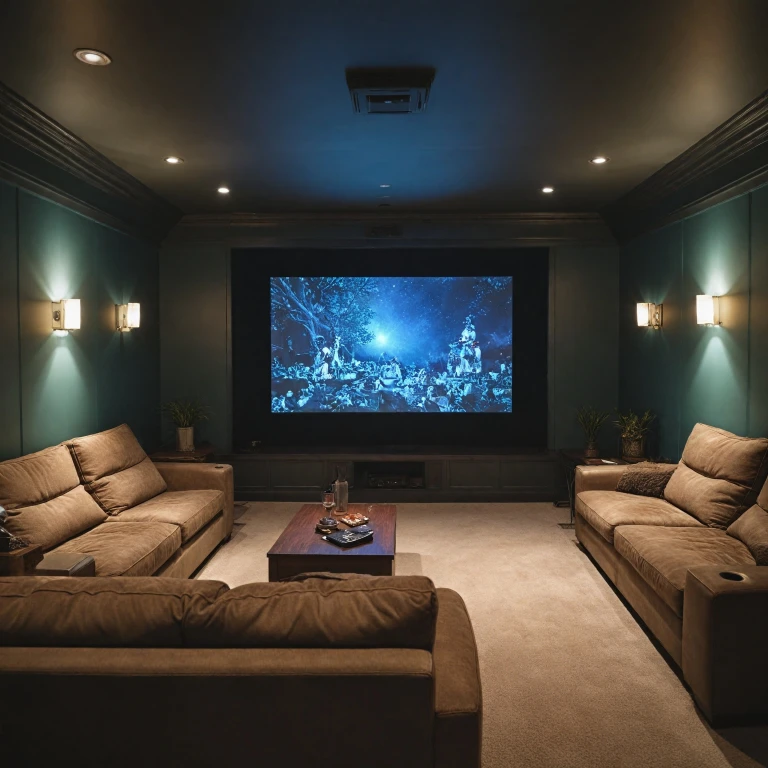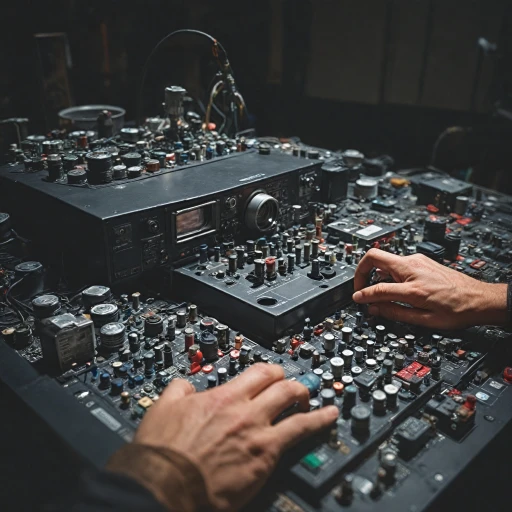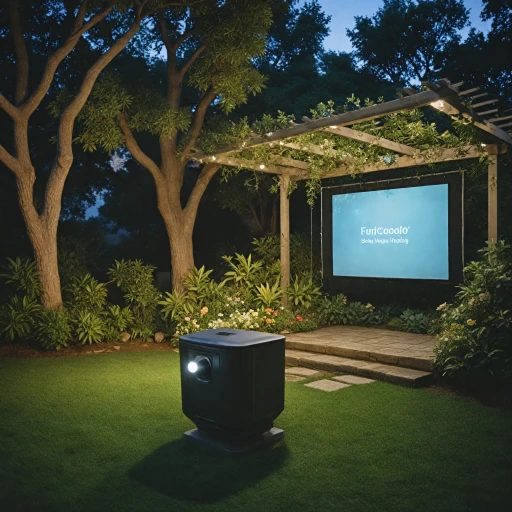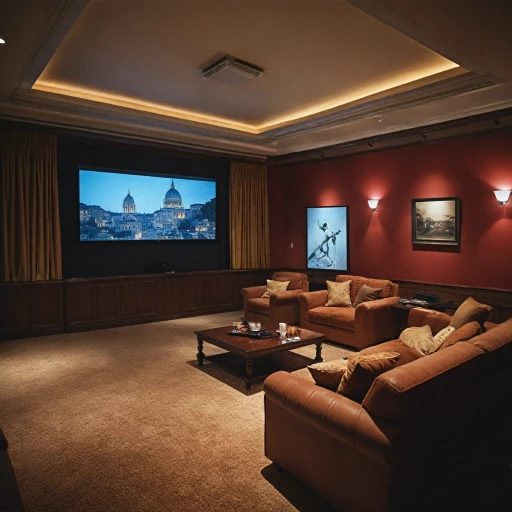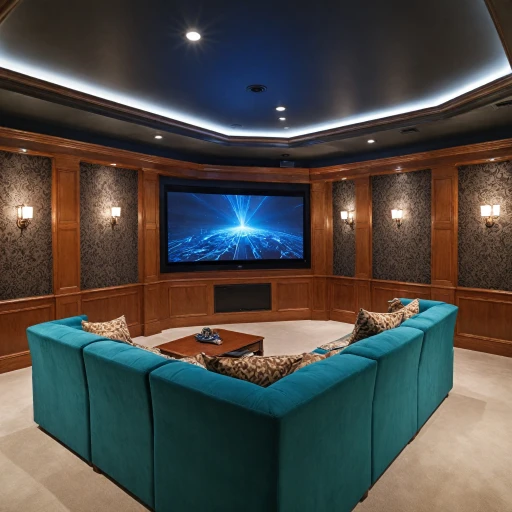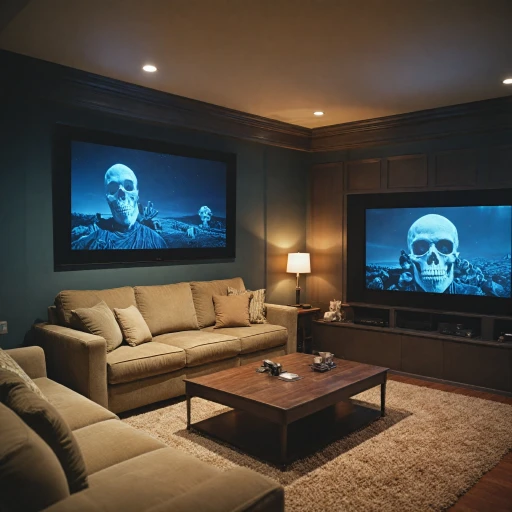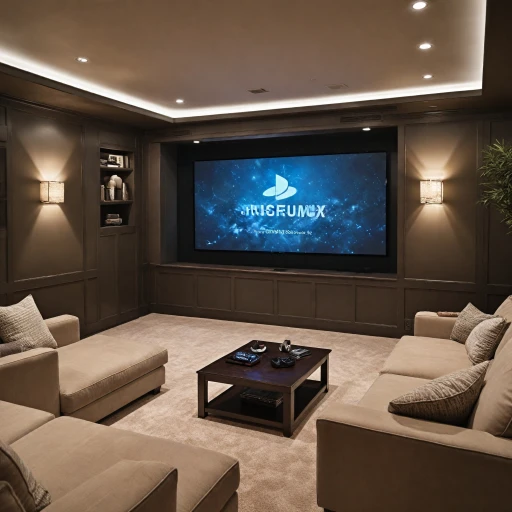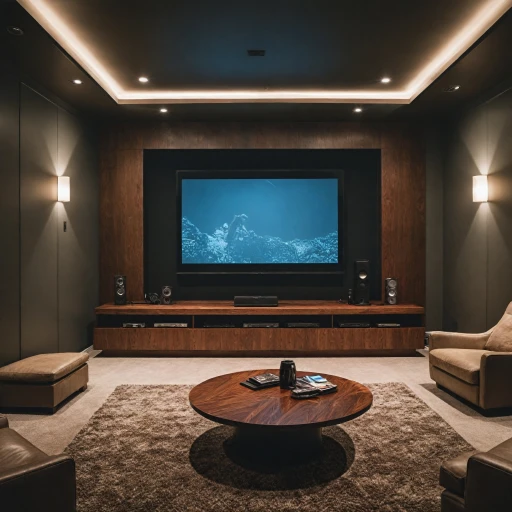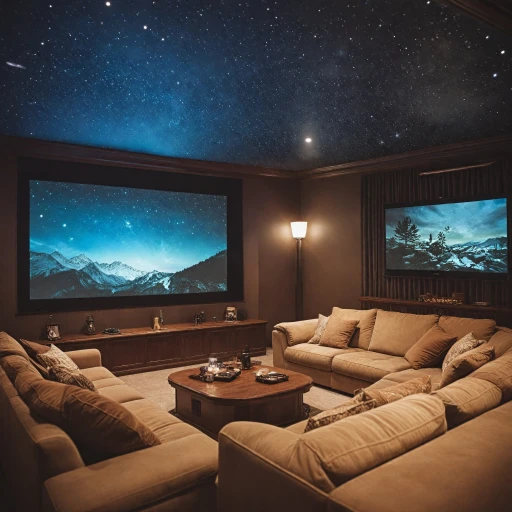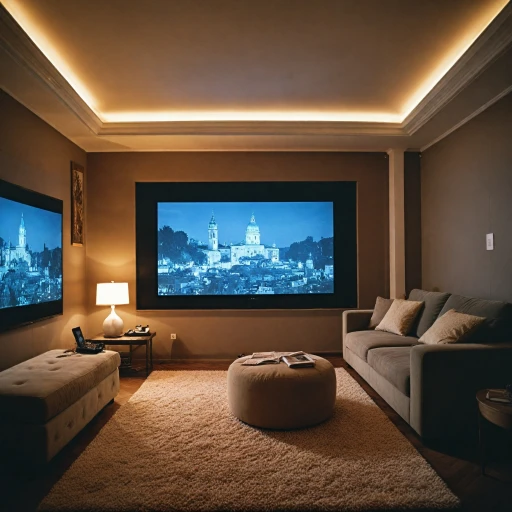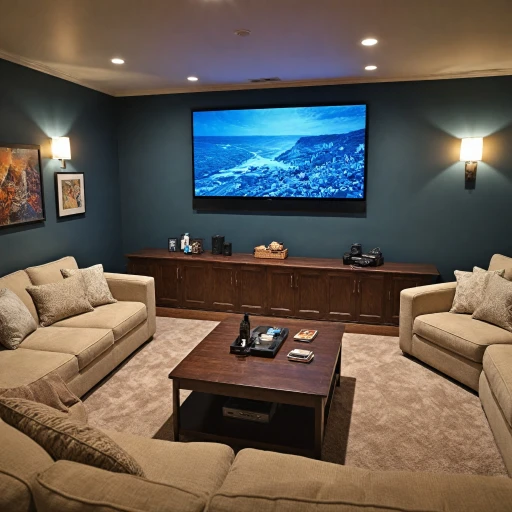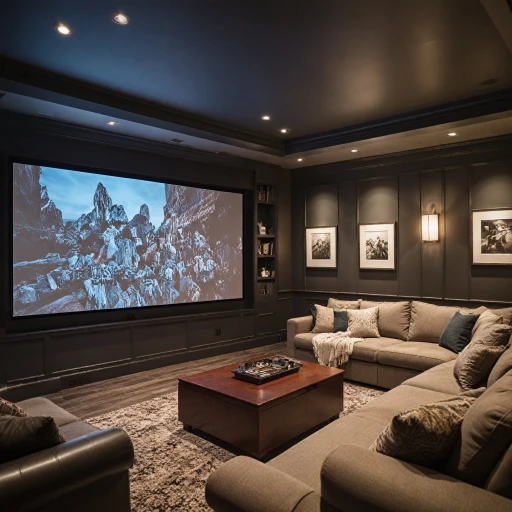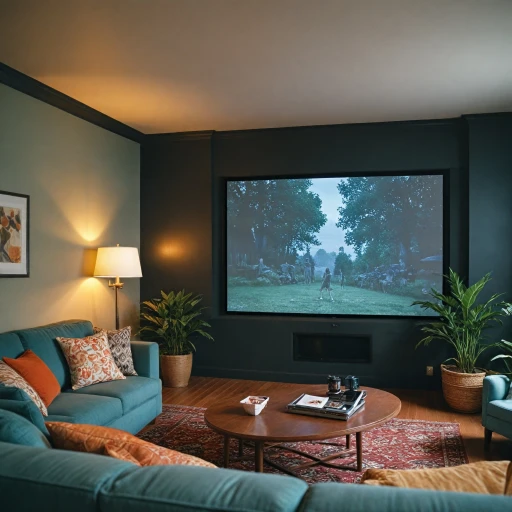
Understanding Short Throw Projectors
Decoding the Basics
Understanding short throw projectors is essential in maximizing your home theater experience. Unlike traditional projectors, which need significant distance to produce a large image, short throw projectors are designed to offer the same quality at a reduced distance. They can cast a big picture from a closer range, making them ideal for smaller rooms or spaces where a long throw isn't feasible.Why Consider Short Throw and Ultra Short Throw?
The need for space is a major consideration in modern home theaters, and that's where short throw and ultra short throw (UST) projectors come into play. These projectors need only a few feet to project an immersive image, such as a BenQ or Epson model. An ultra short throw projector (often called a UST projector) can be placed even closer to the screen, which means less rearranging and more seamless integration into your existing setup.The Importance of Laser Technology
The best short throw projectors often incorporate laser technology, which means more vibrant colors and longer lamp life. A laser projector like the Hisense Pro or the Formovie Cinema Edge can deliver exceptional picture quality with vivid colors and deep contrast, creating that cinema feel at home. With their precision, they offer a superior viewing experience, which is further enhanced when paired with a quality sound system.Brightness and Light Considerations
When selecting a projector, consider the ambient light in your room. Models with higher ANSI lumens ratings, such as the Epson EpiqVision Ultra, can perform better in brightly lit areas, ensuring that images remain clear and vibrant. The goal is to have a bright yet balanced projection that maintains clarity, even in well-lit rooms. To ensure your projector fits into your home theater seamlessly, consider the projector stands choosing the right stand for your short throw projector is crucial for the optimum setup and performance."Key Features to Consider
Essential Characteristics to Look For
Choosing the right short throw projector for your home theater involves understanding several key features. These elements ensure that the projector will meet your requirements for picture and sound quality, as well as fit seamlessly into your designated space.
- Throw Distance: The defining characteristic of short throw projectors is their ability to produce large images from a relatively short distance. Generally, these projectors need to be placed between 2-8 feet from the screen. If you're considering placing your projector even closer, look into ultra short throw (UST) options.
- Resolution and Image Quality: For an immersive home theater experience, look for models that offer high resolution, such as 4K. This ensures clear and detailed images. The quality of the lens can also impact your viewing pleasure, affecting focus and sharpness on the screen.
- Light Source: Many modern projectors utilize laser technology, providing longer-lasting lighting and consistent brightness. Laser projectors are ideal for maintaining high picture quality over time, with options like the BenQ and Epson offering strong choices.
- Brightness: Measured in ANSI lumens, brightness is crucial for clear images, especially in rooms with ambient light. Short throw projectors typically offer a range of brightness levels, so consider your room's lighting conditions when making a decision.
- Sound Quality: While projectors often include built-in speakers, the quality varies significantly. For cinema-quality sound, consider pairing your projector with a dedicated sound system. Reviews often highlight the Hisense Pro for its impressive audio output.
- Connectivity Options: Modern projectors should support various inputs like HDMI, USB, and wireless connections for streaming devices, enhancing functionalities like a golf simulator or smart TV capabilities.
Evaluating these features against your specific needs can help determine the best short throw projector for your setup. Additionally, consider your preferences for integrated smart features, port flexibility, and aspect ratios, all of which contribute to a fully immersive home cinema experience.
Top Models on the Market
Top Picks for Home Theater Projectors
When diving into the world of projectors for your home theater, selecting the right model can elevate your viewing experience. Below are some of the top choices currently available, each with its unique strengths.- Epson EpiqVision Ultra: This is a prime example of a top-tier laser projector. Known for its brightness and color accuracy, it boasts high ANSI lumens, making it perfect for both dark and well-lit rooms. The EpiqVision Ultra offers a crisp and vibrant picture that brings cinematic experiences right to your home.
- BenQ Short Throw Projectors: Ideal for compact spaces, these projectors provide a large image within a short distance from the screen. Offering impressive image clarity and sound quality, BenQ models are versatile, whether you're entertaining guests or using a golf simulator.
- Hisense Pro Laser Projectors: Known for their ultra short throw capabilities, the Hisense Pro models provide immersive visuals with strong color contrasts. Their compact design fits comfortably in any room setup, while maintaining the performance needed for a true cinema experience.
- Formovie Cinema: This projector stands out for those wanting top-of-the-line image credit and clarity. It is praised in many projector reviews for its reliability and picture quality that closely rivals traditional cinema screens.
Installation Tips and Tricks
Quick Setup for Optimal Viewing Experience
Setting up a short throw projector requires some careful planning to achieve the best viewing experience. Consider these installation tips to ensure your projector delivers beautiful, crisp images on your screen or wall.Adjusting Distance and Placement
One of the advantages of a short throw projector, whether it's a laser projector like the Epson EpiqVision or a Hisense Pro, is that it requires less space than traditional long throw projectors. Position the projector closer to the screen for a larger, more vibrant picture. For ultra short throw (UST) projectors, the placement is even more forgiving, allowing the projector to sit merely inches away from the screen. This minimizes shadows and light obstructions.Choosing the Right Screen
Selecting a compatible screen enhances the image quality significantly. Opt for a screen designed for short throw or UST projectors if possible. These screens are optimized to reflect light better, ensuring sharp images and vibrant colors. A curved screen can also enhance viewing angles and immersive experiences, especially beneficial for applications like a golf simulator.Managing Light and Acoustics
Consider the room's lighting conditions. Ensure the room can be dimmed, as natural light can affect picture clarity. Short throw projectors offer powerful performance in various settings; however, excessive light can reduce the picture quality. Pay attention to sound quality as well—adding a soundbar or surround sound system can elevate your cinema-like experience.Handling Multiple Projectors
For those incorporating multiple projectors in different rooms or using setups like the Formovie Cinema, it's essential to manage and configure each one separately to avoid interference. This practice ensures each projector delivers optimal performance without overlap issues. Remember, while short throw and UST projectors offer flexibility in placement and setup, they still require careful consideration of distance, screen type, and room conditions to achieve the best results. For more detailed guidance on setting up your projector, refer to our in-depth review of the BenQ projectors.Maintenance and Care
Essential Maintenance Practices
Maintaining your home theater projector ensures the longevity and optimal performance of your device. Here are some crucial practices to follow:
- Regular Dusting: Dust can accumulate on the lens and air vents of your projector, potentially affecting the image quality. Use a soft cloth to gently clean the lens and a can of compressed air to keep the vents free of dust.
- Proper Ventilation: Overheating is a common issue with projectors. Ensure your device has ample space around it for ventilation, particularly if you’re using a high-powered model like a laser projector.
- Filter Cleaning: Check the air filters regularly, as dust buildup can lead to poor performance and overheating. Refer to the projector manual for specific instructions on cleaning and replacing filters.
- Bulb Replacement: The light source of your projector will eventually dim and require replacement. Maintaining an inventory of spare bulbs can help prevent disruption in your viewing experience.
Best Practices for Longevity
Caring for your short throw or ultra short throw projector involves more than routine cleaning. Implement these best practices to extend the lifespan of your device:
- Correct Shut Down: Always use the proper shut down procedure to preserve the bulb life. Instant power-offs can damage the bulb and internal components of projectors like the Epson EpiqVision or Hisense Pro.
- Controlled Environment: Keeping your projector in a stable environment, free from extreme temperature fluctuations and humidity, will prevent internal damage and lifespan reduction.
- Storing Cables Properly: When not in use, neatly coil cables to avoid them from tangling, which could damage ports over time.
Monitoring Performance and Troubleshooting
Regularly assess your projector's performance to identify issues early, ensuring dynamic and detailed image quality:
- Image Quality Check: Periodically test your projector’s display against a standard reference to catch any drop in brightness or resolution early, especially in models like BenQ and Formovie Cinema.
- Sound Quality Assessment: Examine the sound output to ensure it complements the cinema-like experience, which is crucial for a home theater setup.
- Software Updates: If your projector supports it, keep firmware updated to leverage performance improvements and bug fixes.
By adhering to these maintenance strategies, your home theater projector can deliver the best image and sound quality, fostering an immersive viewing experience.
Troubleshooting Common Issues
Common Problems and Simple Solutions
Home theater enthusiasts know that even the best short throw projectors can encounter issues after continued use. Fear not, as many of these problems can be addressed with simple troubleshooting steps. Below, we delve into some prevalent projector issues and their respective remedies.
Picture Quality Woes
If your screen's image appears blurred or the colors seem washed out, start by checking the projection settings. Projectors like the Epson EpiqVision and BenQ models often come with customizable image settings. Adjust the color balance, brightness, and contrast until you find the optimal picture quality. Additionally, ensure that the projector lens is clean and the screen is free from dust. Regular cleaning can prevent image deterioration and enhance the overall cinema experience.
Audio Disturbances
Sound quality is vital for a true home cinema feel, but sometimes, projector speakers fall short. Ensure the volume settings are appropriately configured and check for any loose connections between the projector and external sound systems. For optimal sound, consider incorporating a dedicated home audio system equipped to handle the dynamic range of a full cinema setup.
Sudden Shut Off
No one wants their projector to power down in the middle of a movie. If this happens, the first step is to verify there are no power interruptions. Confirm that the power cord is secure and that the outlet is functioning correctly. Additionally, certain projectors, especially laser and ultra short throw models, may overheat if air vents are blocked. Ensure that the projector has sufficient ventilation and check if the internal filters need replacement. Keeping your projector in a cool, well-ventilated area can effectively prevent overheating.
Light and Laser Issues
The projector's light source, whether a bulb, LED, or laser, can affect performance. With laser projectors like the Hisense Pro or Formovie Cinema, the light source may require recalibration. If the light output is weak, check the projector's settings to see if the eco-mode is on and switch to a higher brightness setting if necessary. Regularly inspect and replace the light source as per the manufacturer's guidelines to maintain optimal ANSI lumens output.
Troubleshooting Advanced Issues
Sometimes, problems can be more complex, such as issues with focus adjustments, keystone correction, or connectivity with other devices. In these cases, refer to the projector review and user manual for specific troubleshooting steps related to your model. Consulting forums or professional repair services might also be necessary to address persistent problems, ensuring your home cinema edge remains smooth and uninterrupted.
